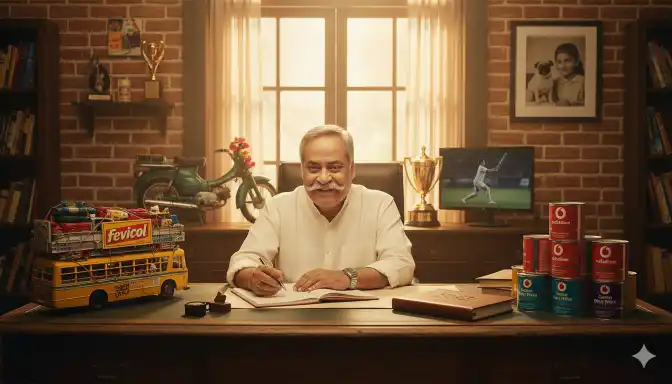Piyush Pandey’s death last Friday marked the end of an era in Indian advertising. For over four decades, the Padma Shri awardee and creative force behind Ogilvy India shaped the way brands spoke to people — with warmth, wit, and emotion. Having won more Cannes Lions than any other Indian, Pandey built campaigns that became part of India’s cultural memory.

His work for Fevicol in 1998 turned glue into a metaphor for unbreakable bonds. The “Fevicol ka Jod” ads, filled with humour and exaggeration — from people stuck to chairs to buses bursting with passengers — made the brand synonymous with strength and reliability.
With Asian Paints’ “Har Ghar Kuch Kehta Hai” in 2002, Pandey shifted the focus from paint to emotion. He gave homes a voice, suggesting that walls carry the stories and personalities of the people who live inside them.
In Cadbury Dairy Milk’s “Kuch Khaas Hai” from 1994, he broke stereotypes by showing adults relishing chocolate during a cricket match — a joyful, relatable moment that redefined how India saw indulgence.
The Hutch campaign of 2003, featuring a boy and his loyal pug, was another masterstroke. At a time when telecom ads were all about call rates, Pandey brought in warmth and simplicity with the line “You and I in this beautiful world.” He later followed it up with the now-iconic Vodafone Zoozoos in 2009.
Earlier in his career, the “Chal Meri Luna” campaign from the 1980s captured India’s aspirations on two wheels. The slogan “Shaan se bolo… Chal Meri Luna” gave everyday riders pride and a sense of freedom.
Pandey also used his craft for social good. The “Do Boond Zindagi Ke” campaign in 1995, fronted by Amitabh Bachchan, urged parents to vaccinate their children and played a major role in India’s successful fight against polio.
Each of these campaigns tells the same story, that advertising, at its best, connects deeply with people. Piyush Pandey didn’t just sell products. He told India’s story, one ad at a time.
